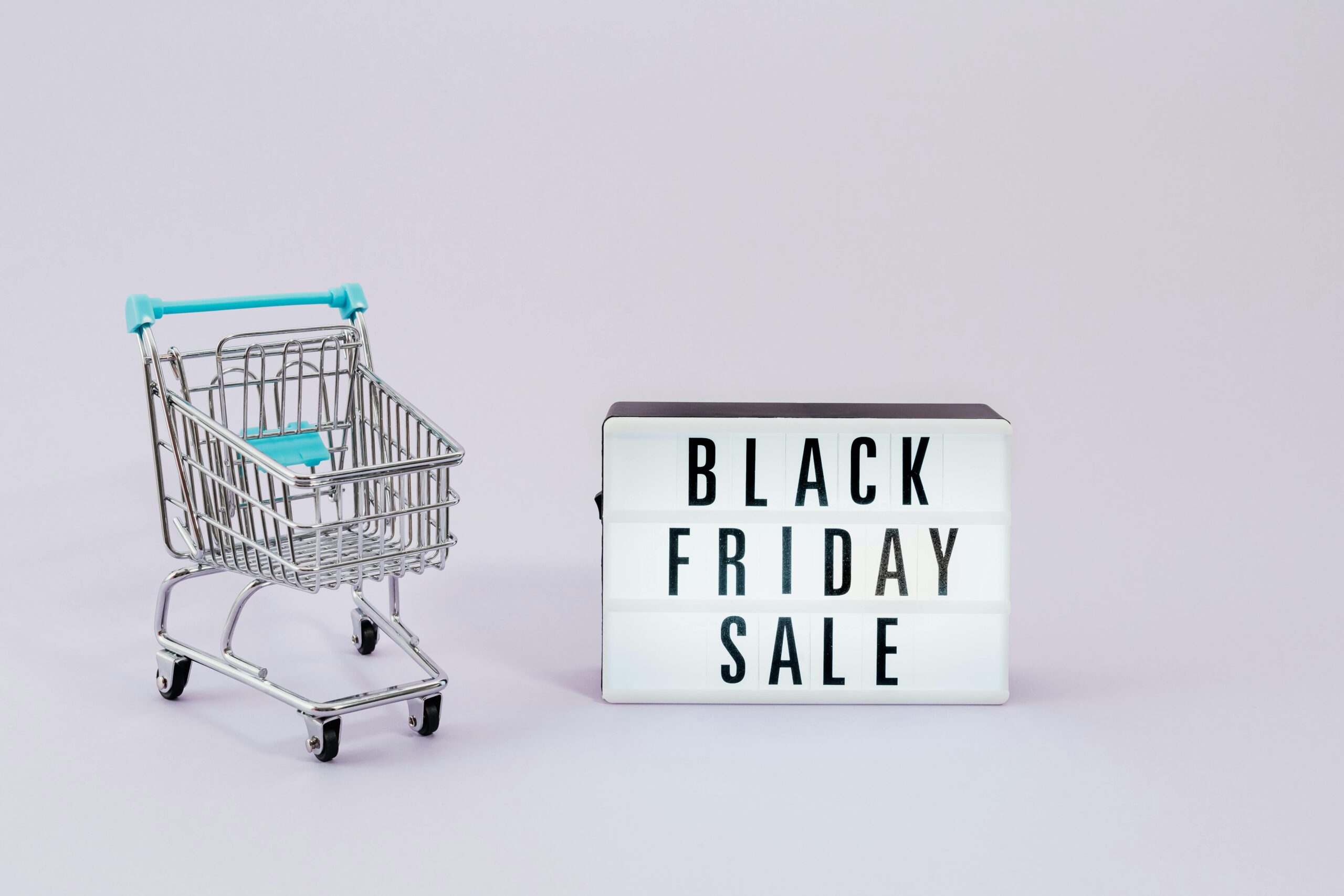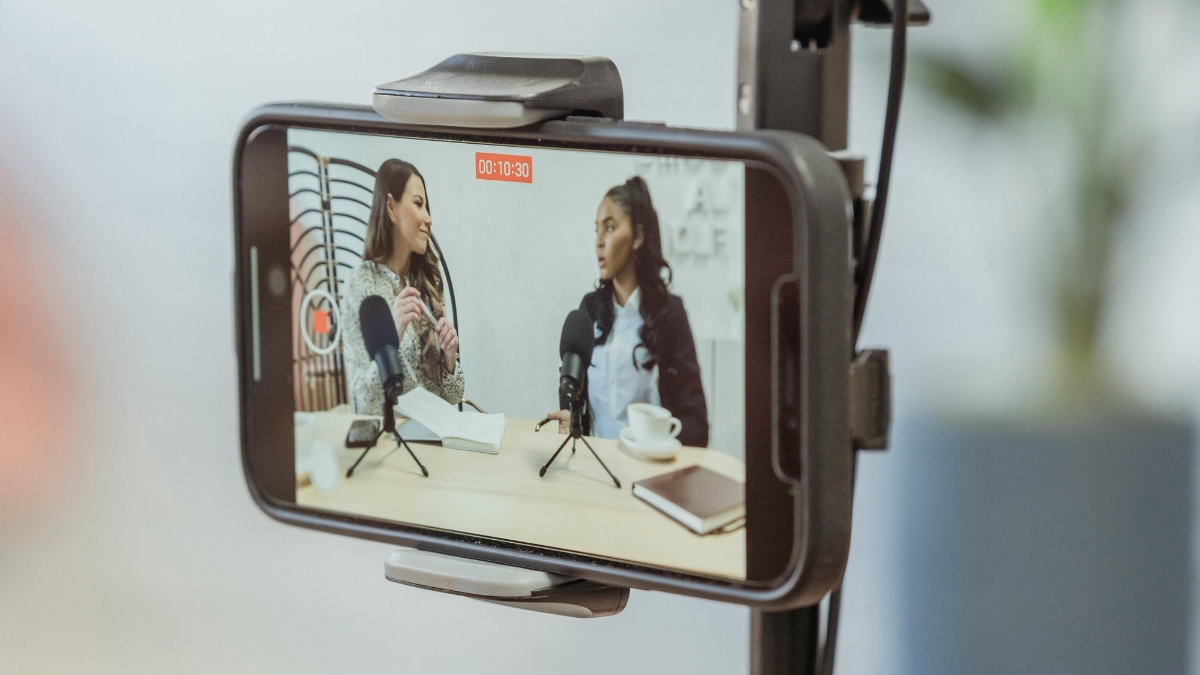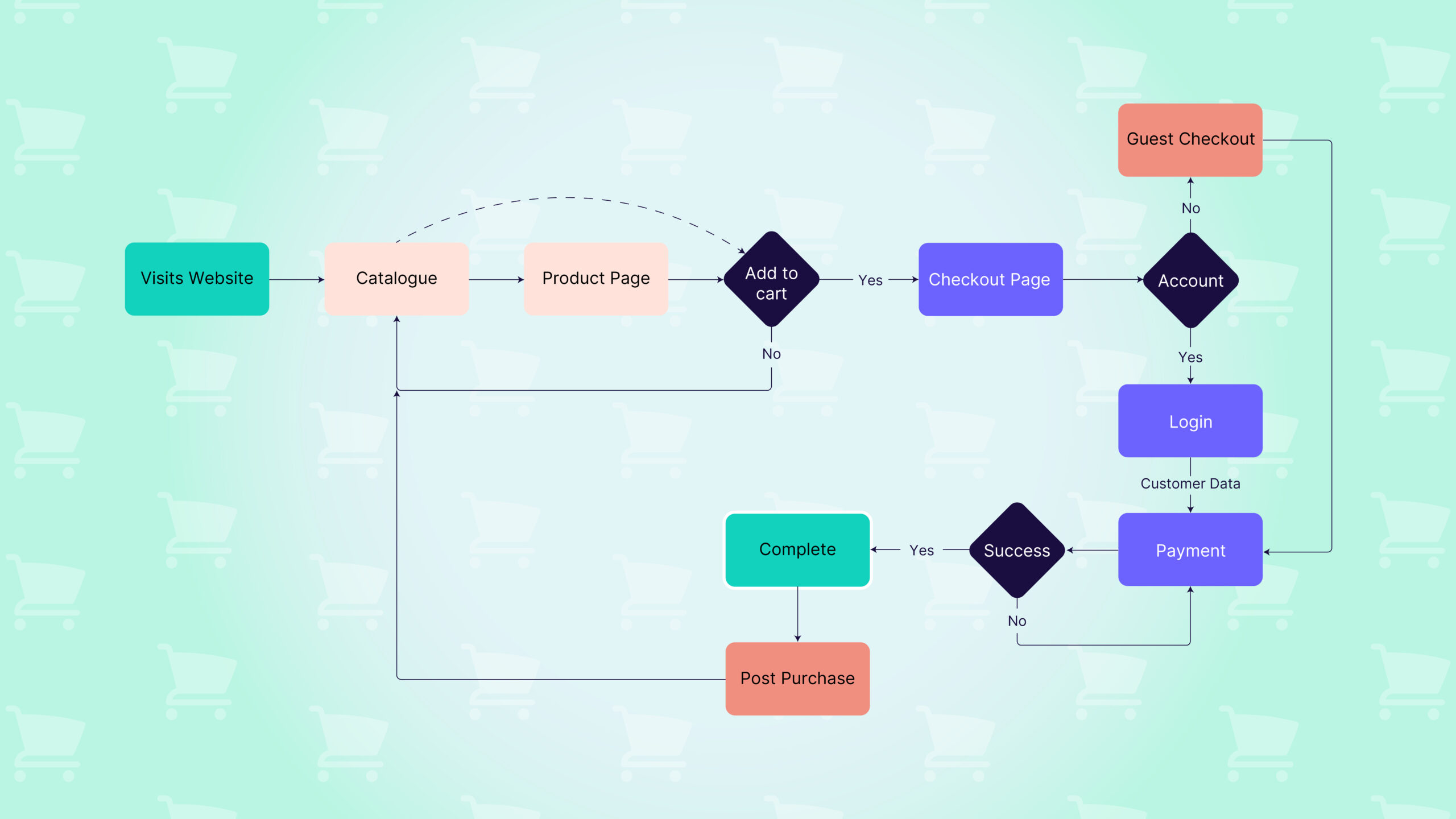For businesses, BFCM represents a massive opportunity. For some retailers, this single weekend generates 20-30% of annual revenue. But here’s the reality: without proper preparation, you won’t capture your share. You’ll lose traffic to site crashes, conversions to slow checkouts, and customers to competitors who planned better.
The window to prepare is closing. Let’s break down exactly what you need to do to win BFCM 2025.
Why BFCM 2025 Will Be Even Bigger (And More Competitive)
The numbers from 2024 tell a clear story about where shopping is heading.
Mobile commerce dominated, with 74% of purchases happening on smartphones according to Shopify data. Desktop shopping accounted for just 26%. If your mobile experience isn’t flawless, you’re losing three-quarters of your potential customers.
Average cart prices rose significantly—up 23% to $199.12 compared to 2023. Australians weren’t just shopping more; they were spending more per purchase, with basket values up 5.7% year-on-year according to Shippit data.
The peak shopping moment? 9pm AEST on Cyber Monday proved to be the busiest sales hour, with last-minute shoppers pushing through purchases just before retailers wrapped their offers.
Early shopping trends emerged strongly. Deals started appearing in early November—some as early as 6 November—and savvy shoppers began making purchases well before Black Friday arrived. The “weekend” is now a month-long marathon.
What’s at stake when you’re unprepared?
Traffic without conversions—your site gets visitors but crashes or performs poorly, turning potential customers into frustrated bounce rates.
Lost sales to competitors—if your checkout is clunky or your deals aren’t compelling, shoppers will find what they need elsewhere in seconds.
Damaged reputation—a bad BFCM experience doesn’t just lose one sale. It loses customer lifetime value. People remember sites that failed them during peak shopping season.
The opportunity is massive, but so is the competition. Every retailer is fighting for attention during the same condensed timeframe. Preparation isn’t optional anymore—it’s survival.
The 90-Day Countdown: When to Start Preparing
If you’re reading this in October thinking “I’ll sort BFCM next week,” you’re already behind.
August and September are when winners start preparing. This gives you time to properly test, iterate, and fix problems before they cost you sales.
Here’s your timeline working backwards from BFCM:
90 days out (August): Analyse last year’s performance. What worked? What failed? What did competitors do that you missed? Audit your website speed, mobile experience, and checkout flow. Identify bottlenecks now whilst you have time to fix them. Remember that clothing, cosmetics, and fitness products were the top-selling categories in 2024—use this data to inform your inventory planning.
60 days out (September): Finalise your promotional strategy, inventory plans, and marketing calendar. Start building email lists and social audiences. Begin creative development for ads and campaigns. Lock in your tech stack—CDN, hosting, payment processing upgrades if needed.
45 days out (October): Launch early-bird campaigns to build momentum. Test everything—load testing, checkout flows, payment processing under stress. Train customer service teams on BFCM-specific protocols. Finalise shipping and logistics partnerships.
30 days out (early November): Start your marketing engine. Email sequences begin. Paid ads launch. Social content ramps up. Your site should be in lockdown—no major changes that could introduce bugs during peak traffic.
During BFCM: Execute, monitor, and respond in real-time. This is not the time for new ideas—it’s time for disciplined execution of your plan.
Competitor research matters more than you think. What promotions did your direct competitors run last year? What did customers respond to? What gaps existed that you could fill? Browse last year’s BFCM coverage, check competitor websites on Wayback Machine, and talk to your customers about what deals captured their attention.
The businesses that win BFCM don’t wing it. They plan meticulously and start early.
Website Performance: Don’t Let Speed Kill Your Sales
Your site will get more traffic during BFCM than any other time of year. If it can’t handle the load, you’re dead in the water.
Load testing isn’t negotiable. Simulate 5-10x your normal traffic and see what breaks. Don’t wait until Black Friday to discover your checkout can’t handle 1,000 simultaneous users.
Use tools like LoadImpact, BlazeMeter, or Apache JMeter to stress-test your infrastructure. Focus especially on checkout, payment processing, and database queries—these are the critical paths that must not fail.
Work with your hosting provider to ensure you have capacity for traffic surges. Cloud hosting with auto-scaling is ideal. If you’re on shared hosting, consider upgrading for November and December at minimum.
Mobile optimisation is where most of your sales happen. Three-quarters of your traffic will be on smartphones based on 2024 data. Your mobile experience needs to be flawless.
Test your site on actual devices—iPhone, Android, various screen sizes. Don’t just rely on desktop browser mobile emulation. Real device testing catches issues you’ll miss otherwise.
Simplify your mobile navigation. Reduce steps to checkout. Make buttons bigger and touch-friendly. Enable digital wallets like Apple Pay and Google Pay for one-tap purchasing. Every extra tap in your mobile checkout is lost revenue.
Page speed matters more on mobile. Aim for under 3 seconds load time. Compress images aggressively. Minimise JavaScript. Use a CDN to serve content faster globally. Google’s PageSpeed Insights will show you exactly what’s slowing you down.
Checkout flow streamlining reduces cart abandonment. The average cart abandonment rate is around 70%. During BFCM, it’s even higher because shoppers are comparing multiple sites simultaneously.
Offer guest checkout—requiring account creation kills conversions. Save account creation for after purchase when friction doesn’t cost you the sale.
Show clear shipping costs early. Unexpected shipping fees at checkout are the top reason for cart abandonment. Be upfront about costs and delivery times.
Display trust signals—security badges, return policy links, customer reviews. During BFCM, people are buying from sites they’ve never used before. Reduce anxiety.
Enable multiple payment options. Credit cards, PayPal, digital wallets, buy-now-pay-later services like Klarna or Afterpay. Different shoppers prefer different payment methods—accommodate them all.
Inventory, Pricing, and Promotional Strategy
Nothing kills momentum like “out of stock” messages during your biggest sales weekend.
Stock planning requires data and foresight. Look at last year’s sales velocity. What sold out? What didn’t move? Clothing tops, cosmetics, dresses, fitness and nutrition, and activewear were the top-performing categories in Australia during BFCM 2024. Within those, boxer briefs, shorts, moisturisers, nail polishes, eye makeup, and sunscreen flew off shelves.
Order inventory early—supply chain delays are real and unpredictable. Better to have slight overstock than lose sales to stockouts during peak demand.
Have a plan for managing inventory visibility. If you’re running low on a hot item, consider removing it from prominent positions rather than disappointing customers with “sold out” messages. Or pivot to “notify when back in stock” campaigns that capture future sales.
Strategic discounting is more nuanced than “everything 50% off.”
Deeper discounts aren’t always better. A well-positioned 25% off with strong messaging can outperform a desperate-looking 60% off. Discount depth should match your brand positioning and margin capacity.
Tiered discounting works brilliantly. “Spend £50 get 15% off, spend £100 get 25% off” increases average order value whilst still delivering the discount customers expect.
Bundle deals move inventory strategically. Pair fast-moving items with slower movers. “Buy this, get that 50% off” clears stock whilst maintaining margin on your primary product.
Creating urgency without desperation is an art.
Scarcity works—”only 15 left in stock” or “limited quantities available”—but only if it’s true. False scarcity destroys trust.
Time limits create action. “24-hour flash sale” or “ends at midnight” gives shoppers a reason to buy now instead of comparison shopping forever.
Early access for email subscribers or loyalty members makes people feel special and rewards your best customers. Launch deals 24 hours early for VIPs, then open to everyone.
Lightning deals throughout the weekend keep people coming back. “Every 3 hours, new deals drop” creates urgency and repeat traffic.
Marketing Campaigns That Cut Through the Noise
Everyone’s inbox is flooded during BFCM. Your marketing needs to stand out or it’s invisible.
Email sequences are your highest-ROI channel. Plan a series, not just one blast.
Early access email (48 hours before public launch): “You’re in—shop our Black Friday deals before anyone else.” This rewards subscribers and drives early sales.
Launch day email: “It’s here—Black Friday deals live now.” Clear subject line, compelling hero image, direct CTAs to your best offers.
Mid-weekend reminder: “Don’t miss out—top deals still available.” Highlight what’s selling fast, create urgency around popular items.
Last chance email: “Final hours—Black Friday ends tonight.” This captures procrastinators and creates last-minute urgency.
Segment your lists. Send different messages to past customers versus new subscribers. Personalise product recommendations based on browsing history. Generic batch-and-blast emails get ignored.
Paid advertising requires bigger budgets and smarter targeting.
CPCs spike during BFCM as everyone competes for attention. Plan for 2-3x your normal ad costs. If you can’t afford to compete, consider alternative timing or channels.
Start campaigns early—don’t wait until Black Friday. Build momentum in early November with teaser campaigns and early-bird offers.
Platform strategy matters. Google Shopping ads capture high-intent searchers. Facebook and Instagram work for discovery and retargeting. TikTok is increasingly effective for reaching younger shoppers. Don’t spread budget too thin—focus on platforms where your customers actually are.
Social media and influencer coordination amplify reach.
Create shareable content—gift guides, deal roundups, styling ideas. Make it easy for customers to share your deals with their networks.
Influencer partnerships work best when planned months in advance. Identify influencers in your niche, negotiate partnerships, and have content ready to launch during BFCM.
User-generated content campaigns encourage customers to share their purchases. Create a branded hashtag, offer incentives for sharing, and repost the best content.
Retargeting strategies for abandoned carts are revenue recovery machines.
Set up pixel tracking and retargeting audiences well before BFCM. You need time to build audience size.
Dynamic product ads show shoppers exactly what they left in their cart. These have higher conversion rates than generic retargeting.
Offer an additional incentive to return—free shipping, extra discount, or limited-time bonus. Sometimes people need one more nudge to complete purchase.
Customer Experience During Peak Traffic
Traffic spikes are great until your customer service can’t keep up.
Live chat and customer service scaling prevent bottlenecks. Your normal support capacity won’t handle BFCM volume.
Bring in temporary staff if needed. Brief them thoroughly on your products, policies, and common BFCM questions.
Implement chatbots for FAQs—shipping times, return policies, order tracking. Reserve human agents for complex issues that truly need personal attention.
Extend support hours. If you’re normally 9-5, consider 24/7 coverage during BFCM weekend. Shoppers are buying at all hours—be available.
Clear communication about shipping deadlines and delivery is critical.
Display shipping cutoff dates prominently—”Order by Nov 28 for delivery before Christmas.” Shoppers need this information to make purchase decisions.
Set realistic expectations. Better to under-promise and over-deliver than create disappointment. If shipping takes 7-10 days, say so clearly.
Send proactive shipping updates. Confirmation emails, shipping notifications, delivery tracking—keep customers informed throughout the fulfilment process.
Returns policy clarity reduces purchase hesitation.
Make your returns policy easy to find and easy to understand. Don’t bury it in legal jargon.
Consider extended holiday returns—”Buy in November, return until January” removes risk from gift purchases.
Free returns are increasingly expected, especially for fashion and electronics. If you charge for returns, be upfront about it.
Post-purchase follow-up builds loyalty beyond the sale.
Thank you emails with order confirmation and what to expect next.
Request reviews a week after delivery—whilst the product experience is fresh.
Suggest complementary products based on what they bought—not pushy, just helpful.
Invite them to join loyalty programmes or subscribe for future deals. Convert one-time bargain hunters into repeat customers.
Post-BFCM: Maximising the Momentum
The weekend ends but the opportunity doesn’t.
Cyber Week and extended promotions keep the revenue flowing. Many retailers now run deals through the entire week between Black Friday and Cyber Monday, then extend into early December.
The psychology shifts after BFCM—shoppers who missed out are looking for second chances. “We extended our sale” campaigns capture this audience.
Converting bargain hunters into repeat customers is the real prize.
BFCM brings traffic from people who’ve never bought from you before. First-time customer acquisition during BFCM is cheaper than any other time of year. But the value is in turning them into repeat customers.
Deliver exceptional experience—fast shipping, quality products, great service. First impression matters.
Follow up with personalised recommendations and exclusive offers for next purchase. “Thanks for your Black Friday order—here’s 15% off your next purchase” with a reasonable expiry date.
Build your email list aggressively during BFCM. Every purchaser should be opted into your marketing (with permission). These are warm leads for future campaigns.
Analysing performance data for next year starts immediately.
What sold well? What didn’t move despite promotion? Which marketing channels drove the most revenue? What was your actual ROI by channel?
Customer feedback is gold—what did people love? What frustrated them? What almost stopped them from purchasing?
Technical performance—where did your site slow down? What broke? What could handle more load?
Document everything whilst it’s fresh. Next August when you start planning BFCM 2026, you’ll thank yourself for detailed notes.
Holiday shipping cutoffs and last-minute shopper strategies extend the season.
Create urgency around shipping deadlines. “Last day for standard delivery before Christmas” drives last-minute sales.
Offer digital gift cards when physical products can’t arrive in time. Capture sales that would otherwise go elsewhere.
In-store pickup (if applicable) serves last-minute shoppers who can’t wait for shipping.
Gift wrapping and direct-ship-to-recipient options reduce friction for gift buyers.
The Bottom Line on BFCM Success
Black Friday and Cyber Monday aren’t just shopping days anymore—they’re a proving ground for your entire business operation.
Your website performance, marketing execution, inventory planning, customer service, and fulfilment capabilities all get stress-tested simultaneously. The businesses that win are the ones that prepare thoroughly and execute flawlessly.
Start early. Test everything. Plan for problems. Focus on customer experience as much as promotions. And remember: BFCM isn’t just about this year’s revenue—it’s about acquiring customers who’ll buy from you for years to come.
The $6.7 billion from last year will be surpassed this year. The question is how much of that growth you’ll capture versus watch go to competitors.
Your preparation timeline starts now.
Don't leave your BFCM success to chance.
Contact Greenhat Services for a holiday readiness audit. We'll assess your website, marketing strategy, and customer experience, then build a plan to maximise your revenue during the biggest shopping weekend of the year.








